
Vladimir Zhdanov "Christmas Eve"
Vladimir ZhdanovToday, Catholics (and Protestants) and Orthodox Christians celebrate Christmas on different days. While the former celebrate Christmas on Dec. 25 according to the Gregorian calendar, some of the latter (and Russian Orthodox Church included) celebrate it on Jan. 7 because this date of the Gregorian calendar equals Dec. 25 according to the Julian one. Even though the Gregorian calendar was adopted by the Soviet government in 1918, the Orthodox Church even today continues to follow the Julian tradition.
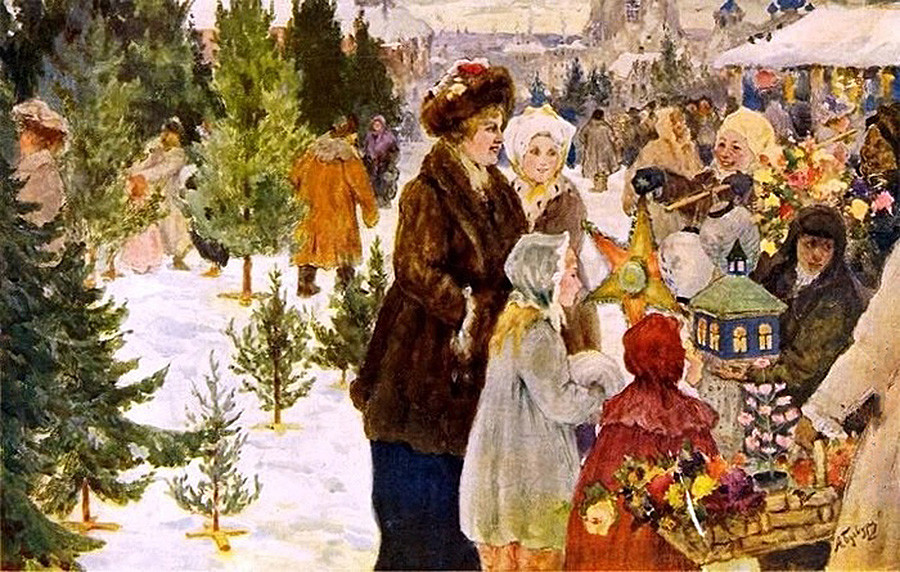
Aleksander Buchkuri "Christmas market" (1906)
The State Russian MuseumChristmas trees were not common in Russia. In fact, the evergreen was considered a `tree of death,’ and no one would think of bringing it home.
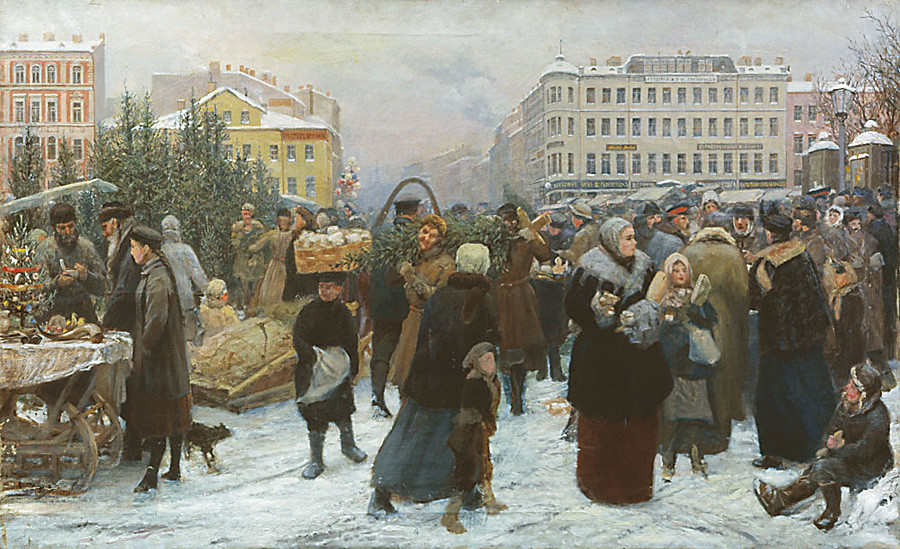
Heinrich Manizer "Christmas Tree Market"
Omsk District Museum of Visual ArtsAs a Christmas decoration, the evergreen tree became common in Russian homes only in the late 19th century. The tradition began with German communities living in St. Petersburg, and then it rapidly spread across the Empire.

Konstantin Trutovsky "Christmas caroling in the Ukraine" (1864)
The State Russian MuseumKoleduvane, an ancient ceremony that took place at midnight on Christmas Eve, was very popular among Russians, Belarusians and Ukrainians (as well as other Slavic nations). People dressed up, walked from house to house, as well as sang songs to wish each other luck, happiness and chase away demons. Americans and Europeans had similar ceremonies during the Epiphany celebration on Jan. 6.
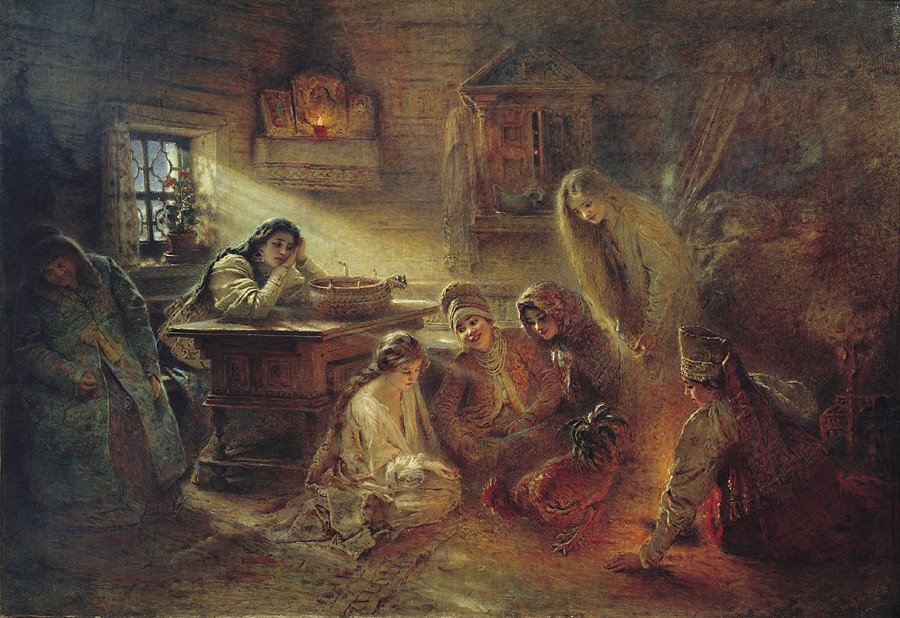
Konstantin Makovsky "Christmastide Divination" (1905)
The State Museum of the History of ReligionChristmas Eve was a time for fortune-telling, especially because people believed that dark forces were strong on that night. Young girls were eager to find out anything about their future husbands, even with help from demons.
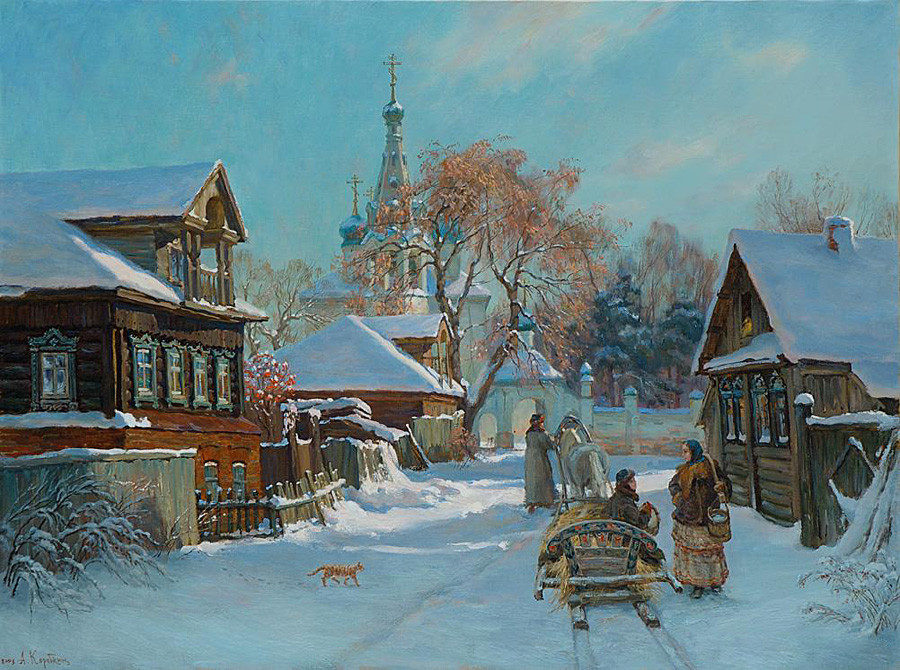
Anatoly Korobkin "Before Christmas" (2011)
Anatoliy KorobkinChristmas was undermined during the Soviet period, when the main winter festival focus shifted to New Year celebrations. In fact, Christmas was officially banned in 1929, and the day became a usual working day.
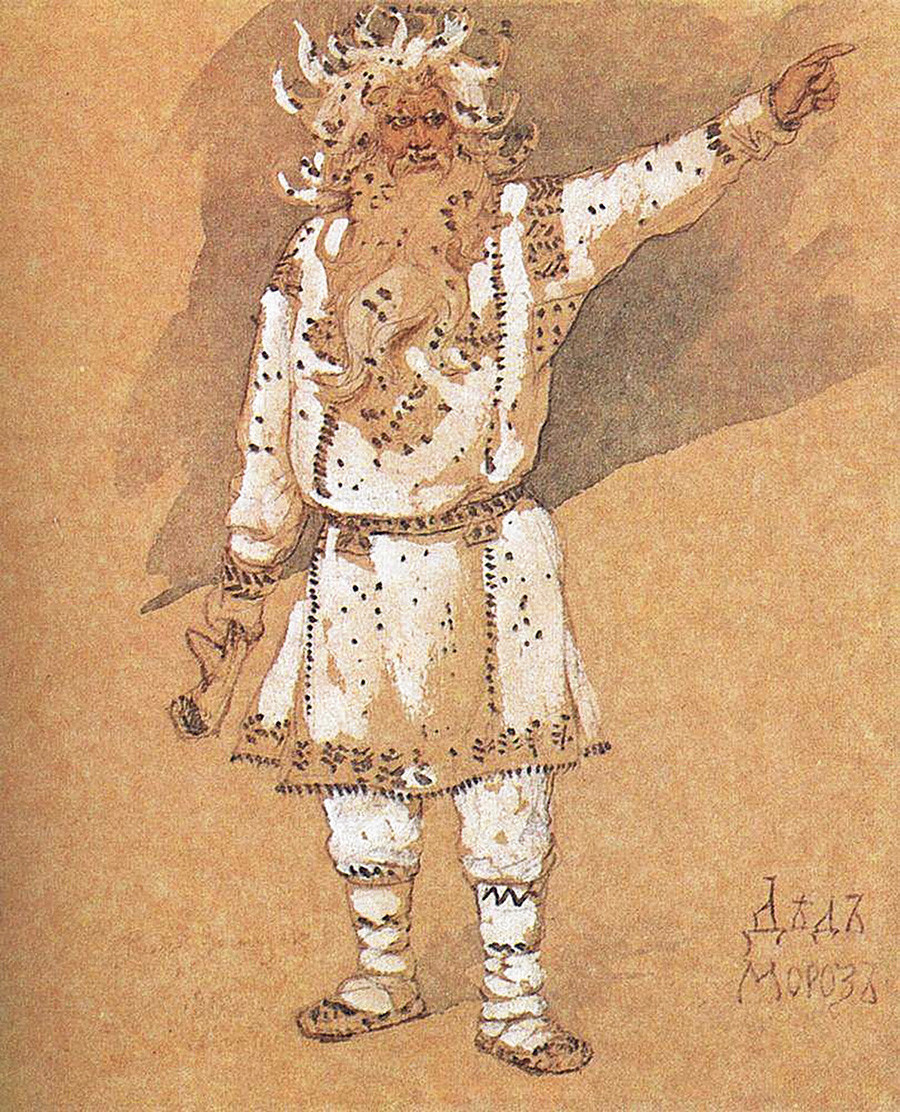
Viktor Vasnetsov "Ded Moroz" (1885)
Abramtsevo Federal State Cultural Establishment Artistic and Literary Museum-ReserveThat’s why Russian Ded Moroz (Grandfather Frost) visits children with gifts not on Christmas Eve like his Western cousin, Santa Clause, but instead makes his merry visit at New Year.

Viktor Vasnetsov "Snow Maiden" (1899)
The State Tretyakov GalleryInstead of elves and gnomes, which are completely unknown in Russian mythology, Grandfather Frost is accompanied by his granddaughter and helper, Snegurochka (The Snow Maiden).
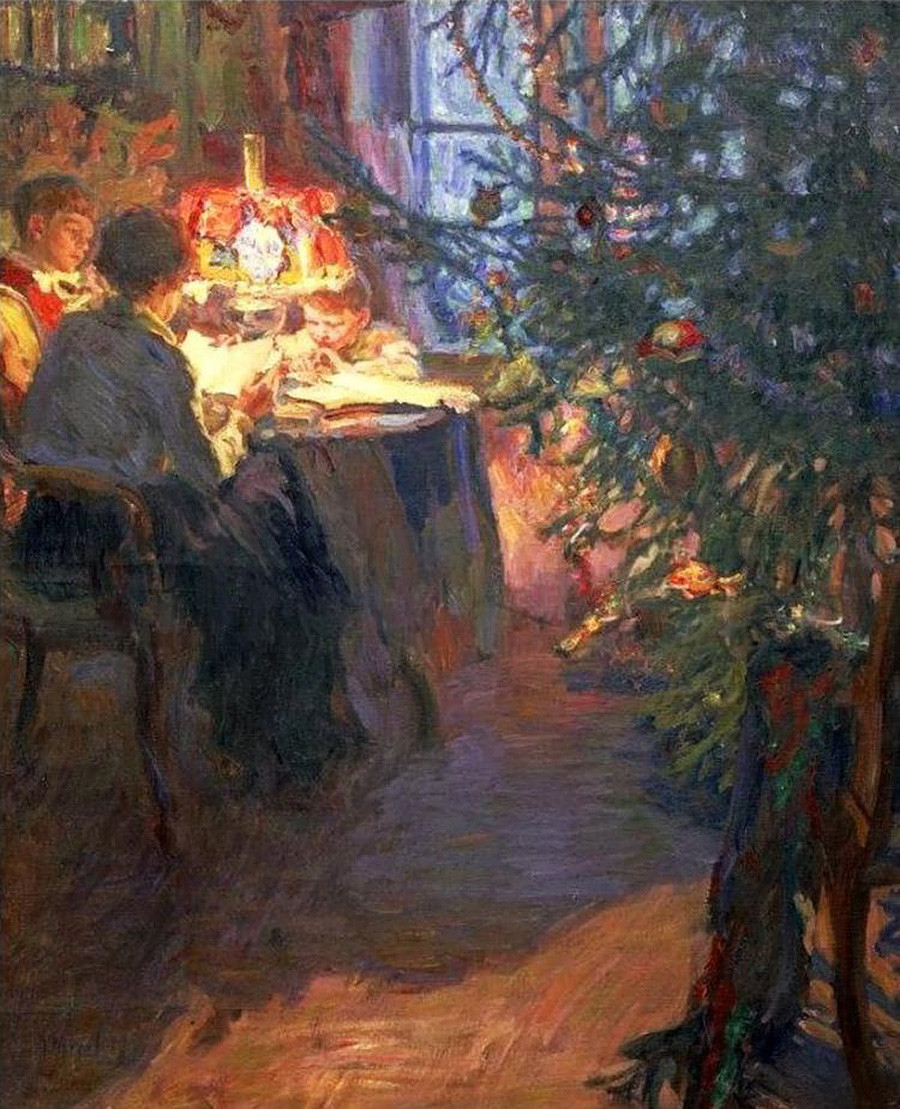
Alexander Moravov "Christmas tree" (1921)
Tver State United MuseumToday, most Russians follow the Soviet tradition and give the New Year celebration top priority. Find out how much money a Russian family is willing to spend on this holiday.
If using any of Russia Beyond's content, partly or in full, always provide an active hyperlink to the original material.
Subscribe
to our newsletter!
Get the week's best stories straight to your inbox